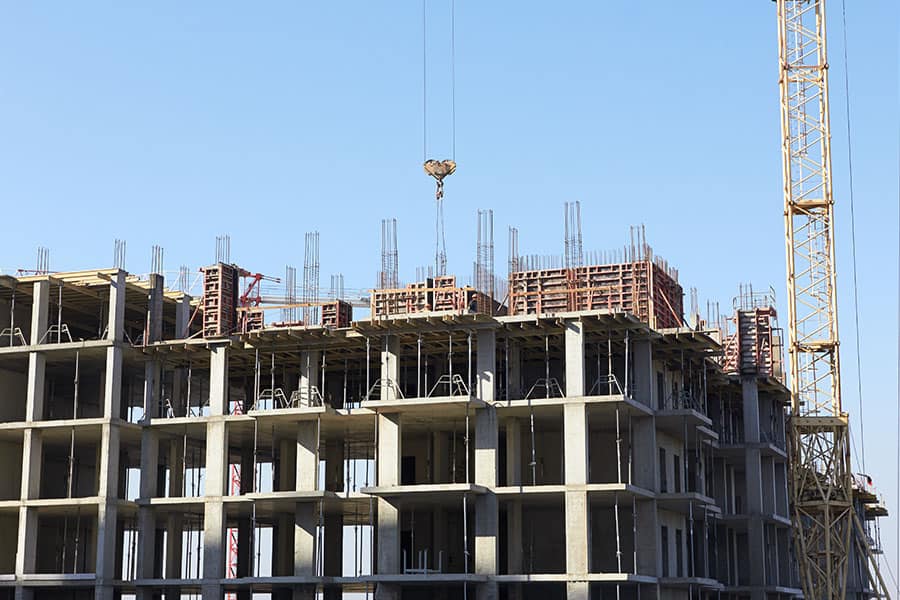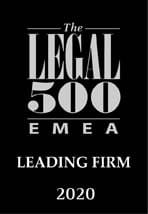Lawsuits filed on the basis of construction contracts are often rooted in disputes associated with the treatment of extra and additional work. The large number of such lawsuits is partly explained by the fact that no matter how careful and diligent parties are, it is very difficult to determine precisely what works will be needed in the construction of a building. Customers often give more details about, or in fact modify, their specifications when the construction is already underway, while contractors often have to face problems that were unforeseeable when the contract was signed. Uncertainties concerning the interpretation of the law can also add to the confusion. In our first article, we describe certain criteria that can be easily applied in everyday practice and that can help you to tell extra work from additional work and determine whether the contractor can rightfully demand extra payment.
This analysis is part of a series of three articles that examine certain issues associated with the legal interpretation of extra and additional work. The first article describes how extra and additional work can be distinguished. In the second, we will discuss the differences between the Hungarian Civil Code and Government Decree No. 191/2009 on Construction Activities, which was in effect until 1 January 2020. Finally, the third article will address the issue of how the related risks can be managed. This series is based on a more detailed article that was published in issue No. 2019/9-10 of Polgári Jog (“Civil Law”), a journal by Wolters Kluwer. We recommend that article for readers who want to take a deeper dive into this matter.
| Summary table (flat-rate contracts) |
Additional work | Extra work |
| Technical specifications | Modified. | Not modified. |
| Fee | Cannot be claimed. | Can be claimed. |
| Cost reimbursement | Only costs that were unforeseeable on the date of the contract can be claimed. | Can be claimed. |
1. The first issue that must be examined is who will have to bear the costs associated with the increased amount of work
In any construction contract, one of the most important questions for both the contractor and the customer is whether they agree on an itemised or a flat-rate payment arrangement. This will decide which of them will be exposed to the risks associated with changes in the amount of the work.
If the fee is payable in an itemised arrangement, the customer is required to pay fees and costs on the basis of the work performed and the quantity of materials used. This means that the customer will have to pay for any plus work that was not included in the fee for the original quantity of work. On the other hand, if the contractor performs less work or uses less of the materials than what the contract originally called for, the customer will also have to pay less.
In contrast, a flat-rate fee arrangement places the onus on the contractor to assess in advance what kind of work will be needed at what cost in order to properly perform the contract. No fee will be payable to it for any plus work that was not included in its initial calculation of the fee (risk associated with additional work). However, if the construction costs less than originally calculated, the contractor can keep the balance, because the customer will have to pay the original fee in that case as well.
Therefore, in an itemised fee arrangement, the contractor will be able to claim a fee and a cost reimbursement that match the work it has actually performed, whereas in a flat-rate arrangement, it will only be able to do so in exceptional cases and on the grounds of modified technical specifications or other circumstances that could not be foreseen when the contract was concluded.
As the differences between extra work and additional work only have relevance under flat-rate contracts, we will now look at this contractual arrangement.
2. A contractor may not claim plus fees in a flat-rate arrangement even if it had to carry out work that was not part of its initial calculations based on the technical specifications, i.e. additional work
In the case of construction contracts, the regulations are primarily designed to protect customers. The contractor is the party that acts professionally and in the knowledge of its trade, and therefore the regulations say that it is responsible for assessing the necessary works, costs and risks associated with a construction project. The contractor cannot argue that a problem that arises in connection with the project is outside the boundaries of its professional expertise, or that the customer’s instructions were “defective” or “incomplete”. If the customer gives an instruction that is unprofessional or in contradiction with a previous instruction or with its needs as they are discernible for the contractor, the contractor has the duty to warn the customer.
It is important to keep this in mind with regard to the topic of in this article, because a contractor is not only required to perform work that is expressly described by the technical specifications under the contract (“Explicit Technical Specifications”). It also has an obligation to perform works that have not been specifically listed in the contract but are necessary in order to complete the building so that it meets the customer’s description or discernible needs, or in order to ensure compliance with the applicable standards and statutory requirements (“Implied Technical Specifications”). It is also important to bear in mind that technical standards are incorporated to the contract without any specific contractual provision, and if the parties do not want to apply a standard, they have to expressly state this in the contract.
Therefore, a contractor cannot argue that the customer has not specifically ordered all necessary works from it, because it has a duty to complete the building in a manner that it meets the quality and performance criteria that are expected by the customer and generally applied in the market. So it may not seek the payment of plus fees or costs for such works in a flat-rate fee arrangement, even if it did not include them in its initial calculations. For example, the payment of plus fees may not be sought in a case where the customer originally did not specify certain works that are necessary for the completion of the work and only demands their performance while the construction is already underway. Additionally, the contractor may not seek further payment if it has to perform more work than it originally calculated, e.g. if it has to excavate more soil than expected for the foundations of the building. Such work qualifies as additional work, which is defined in the Civil Code as follows: “a contractor is required to perform any work that is included in the construction contract but not in the assessment of the fee, as well as any work without which the building cannot be completed in a manner that makes it fit for the purpose intended.”
Consequently, contractors may never seek plus fees for additional work in flat-rate arrangements; nevertheless, they may claim the reimbursement of unforeseeable costs that were incurred in connection with the additional work (please see point 3 below).
3. Contractors may seek reimbursement of costs that were incurred in connection with additional work and could not be anticipated when the contract was concluded
Contractors must account for all costs, expenses and risks that a skilled tradesman can reasonably anticipate in the performance of his trade. Therefore, as noted earlier, a contractor’s duties and liabilities are not determined by what it has anticipated or could anticipate, but by what a person with reasonable skill in the given trade and proceeding with due care would generally have anticipated in the same situation.
Consequently, a contractor may not seek fees over the contracted fee for work that is necessary in order to make the building fit for the purpose intended and that does not exceed customary levels significantly, and it may not seek the reimbursement of the related costs. The contractor may only seek to recover costs that stem from unforeseeable circumstances, such as those that hindered performance of the work due to unavoidable causes beyond the contractor’s control and for which it could not prepare. Such circumstances include, for example, restrictions related to epidemic emergencies and inclement weather conditions.
It is important to point out that in exceptional cases, a contractor may claim the reimbursement of additional costs on the grounds of not having adequate skill if a problem arose in connection with the specialist trade of another participant and the contractor could not have realised such problem even with due care. For example, the contractor is required to examine the designs and drawings provided by an architect or engineer and it is required to spot errors that can be identified with due care. On the other hand, it has no obligation to identify faults in the design that require specialist design knowledge and complex calculations, such as thermal bridge problems that result from a faulty design. The contractor cannot be reasonably expected to account for such problems, and therefore it can claim the reimbursement of the related costs from the customer.
4. Customers are required to pay fees for work that is required to meet specifications provided after the conclusion of the contract, i.e. extra work, even in flat-rate arrangements
While an instruction to perform additional work qualifies as an instruction to perform the contract, an instruction regarding extra work will result in the modification of the contract and extra fees and costs will be payable for it.
Section 6:244(2) of the Civil Code defines extra work essentially the same way as judicial practice had: work that is ordered after the conclusion of the contract, and particularly work that is necessary due to a modification of the design. A contractor is required to complete such an extra order as long as doing so does not make its duties disproportionately onerous. An extra order qualifies as the customer’s unilateral modification contract. It follows from the definition of extra work that it represents a requirement that goes beyond the original contract, and therefore the fee agreed in the contract will obviously not cover it. Consequently, consideration for extra work must be added to the original contract fee under Section 6:245(1) of the Civil Code.
Whether a given work qualifies as extra or additional work is a fundamentally a technical question that is examined by forensic experts in a lawsuit. The question will be decided on the basis of whether the given work was part of the original technical specifications. If an order made by the customer after the contract date modifies the specifications (whether the Explicit or the Implicit Technical Specifications), the related work will qualify as extra work and the contractor will be entitled to extra fees.
The contractor’s ability to successfully prove that the technical specifications were indeed modified will be decided in the evidentiary procedure in a lawsuit and may well be key in outcome of the lawsuit. This is usually easier when the Explicit Technical Specifications are modified, because in that case the customer’s order modifies a clear and expressly stated requirement. The contractor’s task is more complicated in the case of Implied Technical Specifications, as the original contract terms that are modified are not expressly stated. What the contractor must provide evidence for in this case is the implicit work items that it expected to perform in order to achieve the end result described by the customer, how it priced such items and how the customer’s modification overrode those expectations and prices.
Authors: András Fenyőházi and Bence Rajkai




